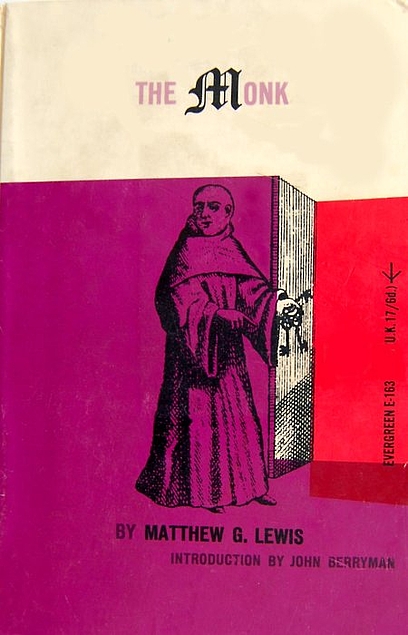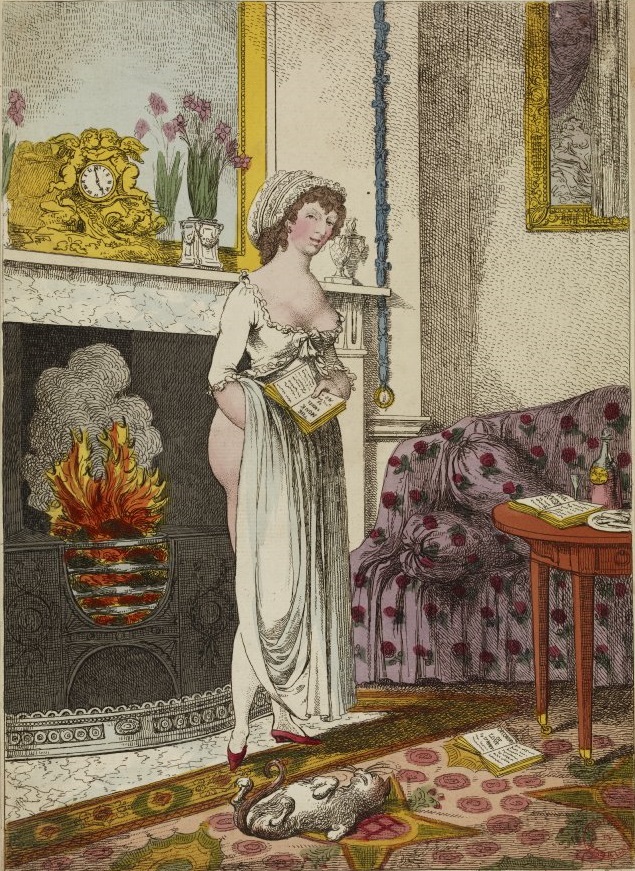
Among the controversial literary works published throughout world history, few have sparked the level of outrage and obsession associated with Matthew Lewis’ 1796 novel The Monk. Even before his book bugged out eyes all across London, the patriarch was feeling hesitant toward Gothic plots. On one hand, Ann Radcliffe’s narrative puzzleboxes were charmingly written. But on the other, her female characters were too pushy against their fathers, too resistant of assigned husbands, and too eager to run off on exotic adventures. A girl could get ideas reading such folly. What a mess that would be!
If women had only been casual readers of Gothic novels, picking one up at random merely to pass the time, it might not have been so unnerving. But it wasn’t like that at all. Girls read these books constantly, aloud while gathered around the kitchen table, late into the night—till their candles burnt low or their voices rasped hoarse. They visited circulating libraries daily in hopes to find the latest volume of romantic terror. They discussed every element, every side character, and no doubt imagined what scandals took place between the lines, where subtext teased sheltered sensibilities. As much as some men might have wanted to, there was no prying away these titillating tales from their wives and daughters. And, to be fair, men were also hooked. The Gothic novel was essentially a new invention at this time. It captured the imagination of practically everyone.
Even still, Lewis’ The Monk took the genre further than polite society ever expected. Scandalous passages included hot sex, cold murder, stark horror, and all levels of blasphemy committed by religious figures—within holy walls, no less. Every ghastly moment was described with unyielding, painstaking detail. It was one thing to imagine the possibility of sexual plunder in the castle of Udolpho, where militant men lurked the darkened stone walls and snuck into bedrooms via secret passage. It was quite another to read such sequences fully realized on the page. As literary scholar Ed Cameron put it, “Lewis offers the reader a pornographic Gothic in which the previously ambiguous supernatural is now given in all its obnoxious presence.”
It may be strange to associate pornographic pleasure with a novel largely about an evil monk who systematically plots the rape and murder of beautiful girls around Madrid, but these unexpected responses to the novel should be a testament to Lewis’ genius. The novel horrifies, but it also lights a fire in the bosom of readers. Indeed, one artist even adapted the reading phenomenon for canvas. In his “A Lady Reading the Monk,” Charles Williams drew an eighteenth century woman clad in a revealing nightgown. She clutches the forbidden book in her left hand, while her right is slipped underneath her gown and appears to be exploring her genital region. A burning fire heats the room and a cat watches with curiosity, marveled by the sight of the woman’s partially exposed backside.
With such violence, smut, and anti-Catholic sentiments available to the general public—not to mention the discovery that its author was a member of Parliament—there is no surprise that the tsunami of controversy created a bestseller for Lewis. Still, controversy and popularity is not enough to consider a novel a landmark. Many—if not most—disputed texts eventually fade away into obscurity. The Monk, however, remains a classic. Particularly for the schools of Gothic Studies and Horror.

There is much to admire about the novel, from impeccable prose, lively characters, fascinating B-plots, emotional dialogue, to its relentless impending doom. One element of Lewis’ artistry that is understudied, however, is his handling of a villain point of view. Ambrosio’s diabolical persona shares traits with earlier villains, such as Walpole’s Manfred, Radcliffe’s Montoni and Marlowe’s Doctor Faustus, but it is fresh for its front row seat to escalating horror. The reader is still tied to a damsel in distress, as was a norm set by Walpole and Radcliffe, but now they also get to experience the methodical drumbeat of villainy from the perspective of the villain. It is this differentiation, perhaps more than any other, which has made The Monk such an enduring and hugely influential text.
Lewis makes Ambrosio a figure worth following even as he systematically plots evil deeds. There’s just enough evidence that Ambrosio is swept up in something more evil—the corrupt and hypocritical institution of the Catholic church—that we almost want him to find redemption. There is a very awkward moment toward the end where the reader must decide if they’d like to see the evil monk have his soul saved by God, but be severely punished by the Inquisition, or get away with his earthly crimes yet condemn his soul to Hell. Neither is an ideal option. Do we hate him? If so, why do we want to see him saved one way or another?
It’s easy to see why The Monk is often heralded as the first horror novel. Though Lewis was interacting with trending Gothic motifs that were so popular in the 1790s, his escalations into the dark regions of terror, such as a willingness to describe violence, demonic conjuring and actual supernatural haunts, make him much grittier than his peers. The effect is transformational, the creation of an aesthetic that would inspire multitudes of knock-offs in Lewis’ own lifetime, and whose influence can still be found in modern horror novels today.
If you’re looking for a 200+ year-old classic that can still make you blush, still make you tremble, and also make you think, it doesn’t get much better than The Monk.
Our bookish social media…
